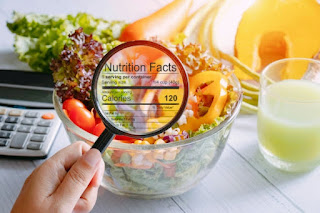How to Read Food Labels
Here are the steps on how to read food labels:
1. **Check the serving size.** This is the amount of food that is considered one serving. The nutrition information on the label is based on one serving, so it's important to know how many servings are in the package.
2. **Look at the calories.** Calories are the amount of energy the food provides. The number of calories you need each day depends on your age, sex, activity level, and other factors.
3. **Check the fat content.** Fat is an important nutrient, but it's important to choose healthy fats. Look for foods that are low in saturated fat and trans fat.
4. **Read the ingredient list.** The ingredient list is listed in order of weight, with the most weighty ingredient listed first. This can help you identify foods that are high in unhealthy ingredients, such as added sugars and processed oils.
5. **Look for added sugars.** Added sugars are any sugars that are not naturally occurring in foods. They are often added to processed foods to make them taste sweeter. Too many added sugars can contribute to weight gain and other health problems.
6. **Pay attention to the % Daily Value (DV).** The DV is a percentage of the daily recommended intake for a nutrient. This can help you compare the nutrient content of different foods.
7. **Consider your individual needs.** When reading food labels, it's important to consider your individual needs and preferences. For example, if you are trying to lose weight, you may want to focus on foods that are low in calories and fat.
Here are some additional tips for reading food labels:
* Don't be fooled by claims like "fat-free" or "low-sodium." These foods may still be high in calories or other unhealthy ingredients.
* Look for foods that are made with whole ingredients. These foods are generally healthier than processed foods.
* Don't be afraid to ask questions. If you're not sure what something is, ask a store employee or the manufacturer.
By following these tips, you can learn to read food labels and make healthier choices for yourself and your family.
Here are some of the most important things to look for on a food label:
* **Serving size:** This is the amount of food that is considered one serving. The nutrition information on the label is based on one serving, so it's important to know how many servings are in the package.
* **Calories:** Calories are the amount of energy the food provides. The number of calories you need each day depends on your age, sex, activity level, and other factors.
* **Total fat:** Fat is an important nutrient, but it's important to choose healthy fats. Look for foods that are low in saturated fat and trans fat.
* **Saturated fat:** Saturated fat is a type of fat that can raise your cholesterol levels. It's found in animal products, such as meat, dairy, and eggs.
* **Trans fat:** Trans fat is a type of fat that is even worse for your cholesterol than saturated fat. It's found in some processed foods, such as cookies, crackers, and fried foods.
* **Cholesterol:** Cholesterol is a waxy substance that can build up in your arteries and increase your risk of heart disease. Limit your intake of foods that are high in cholesterol, such as fatty meats, eggs, and dairy products.
* **Sodium:** Sodium is a mineral that can raise your blood pressure. Limit your intake of foods that are high in sodium, such as processed foods, canned soups, and frozen dinners.
* **Total carbohydrates:** Carbohydrates are a type of nutrient that provides your body with energy. However, not all carbohydrates are created equal. Choose complex carbohydrates, such as whole grains, over simple carbohydrates, such as sugar.
* **Sugar:** Sugar is a type of carbohydrate that can contribute to weight gain and other health problems. Limit your intake of foods that are high in sugar, such as candy, soda, and pastries.
* **Fiber:** Fiber is a type of carbohydrate that is important for your digestive health. It's also found in whole grains, fruits, and vegetables.
* **Protein:** Protein is an important nutrient that helps build and repair your muscles. Choose lean protein sources, such as fish, chicken, and beans.
By reading food labels carefully, you can make healthier choices for yourself and your family.

Comments
Post a Comment